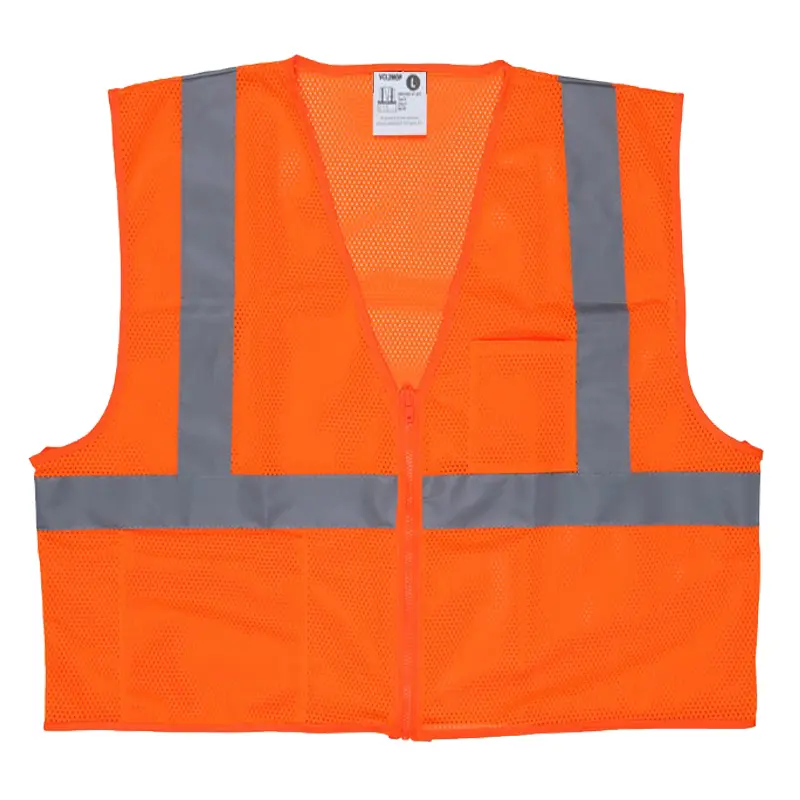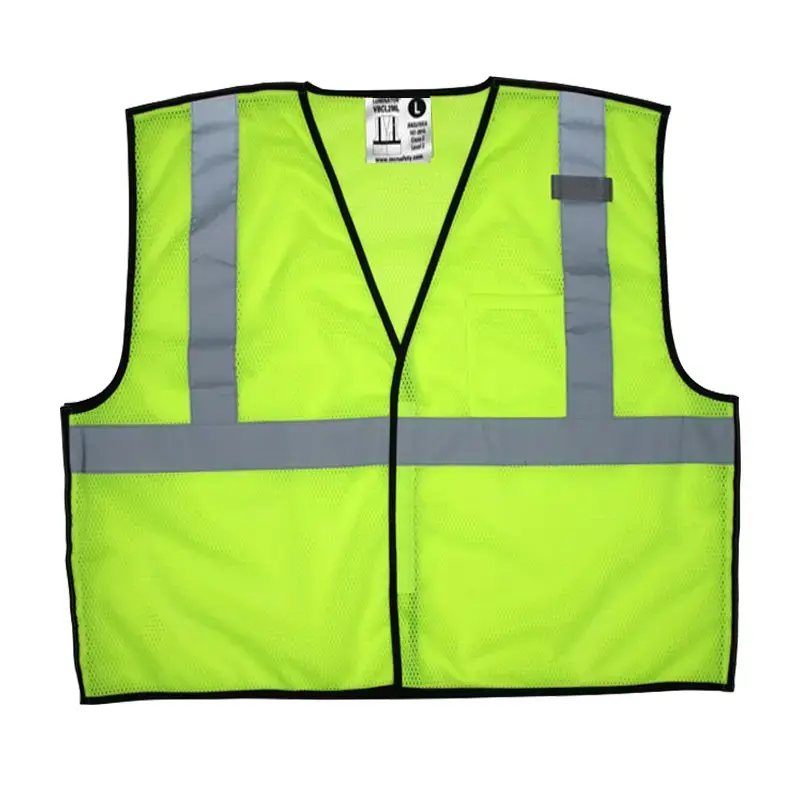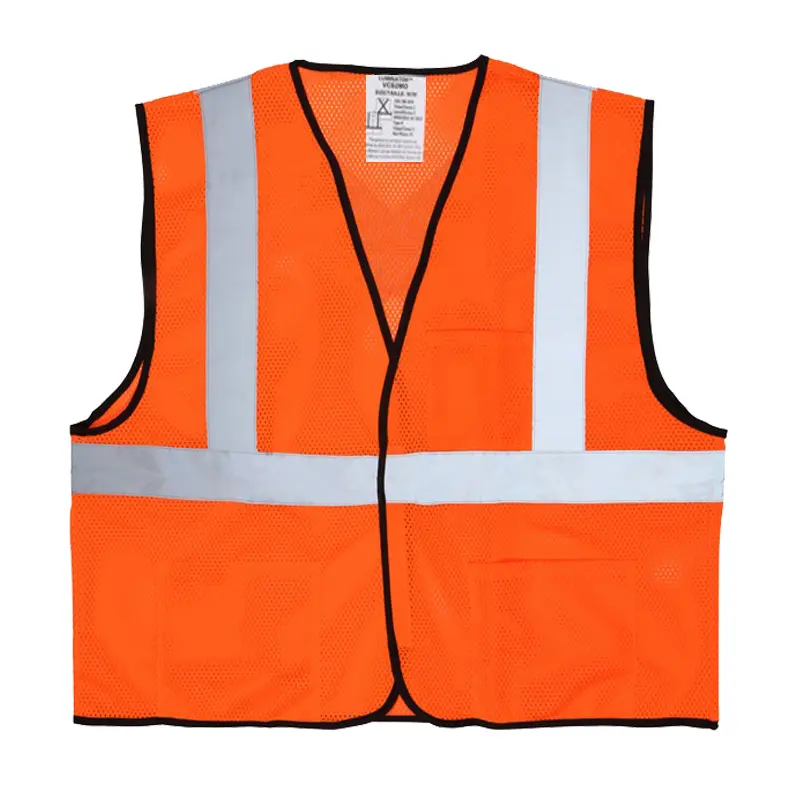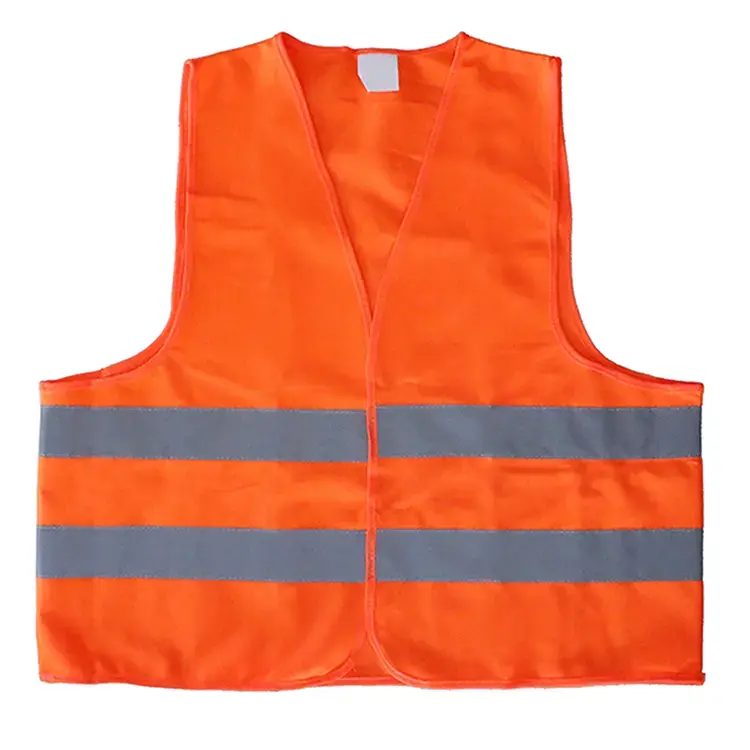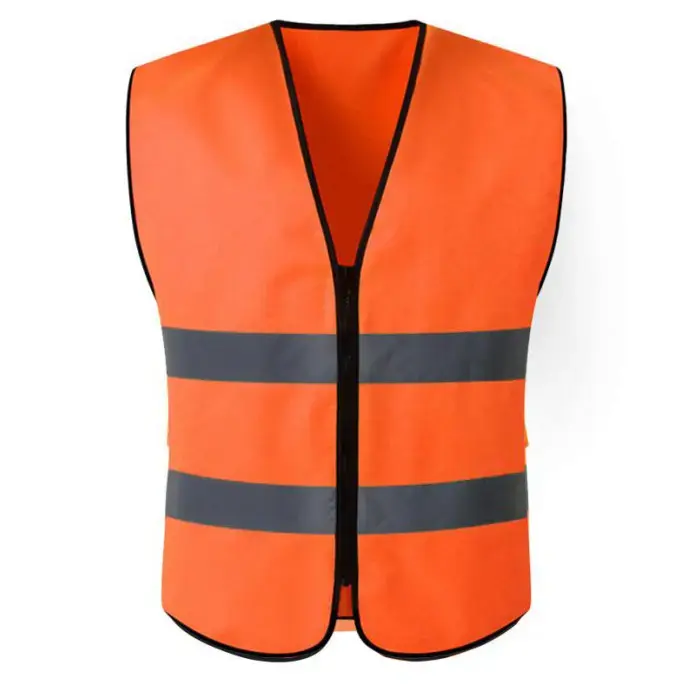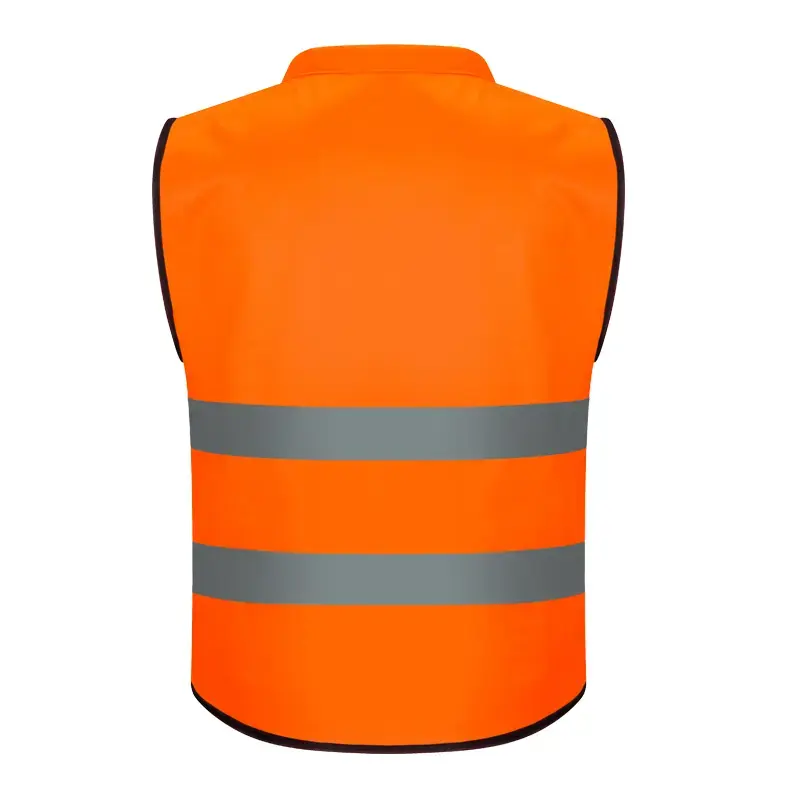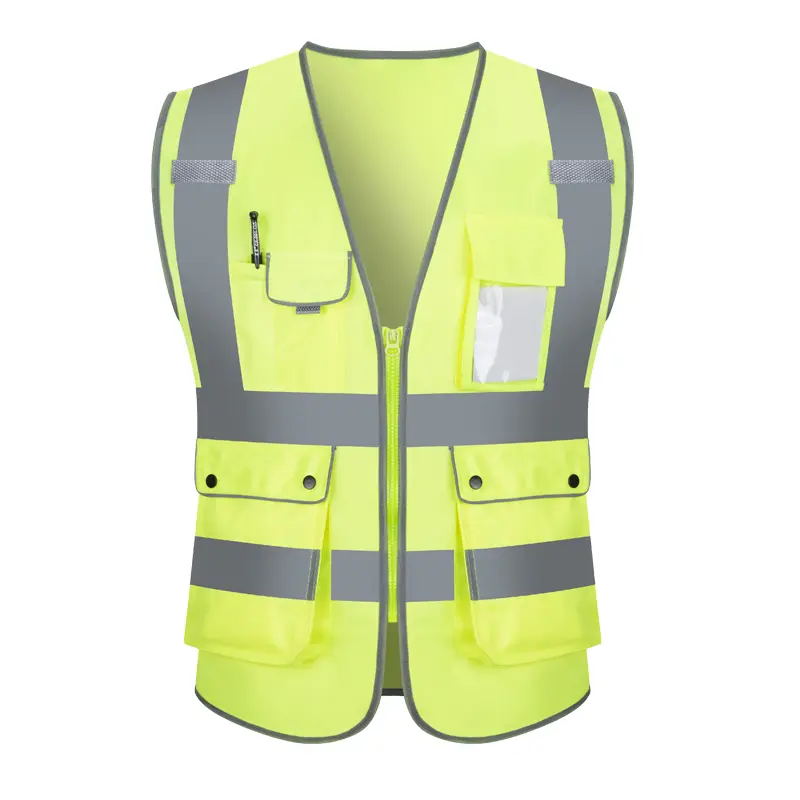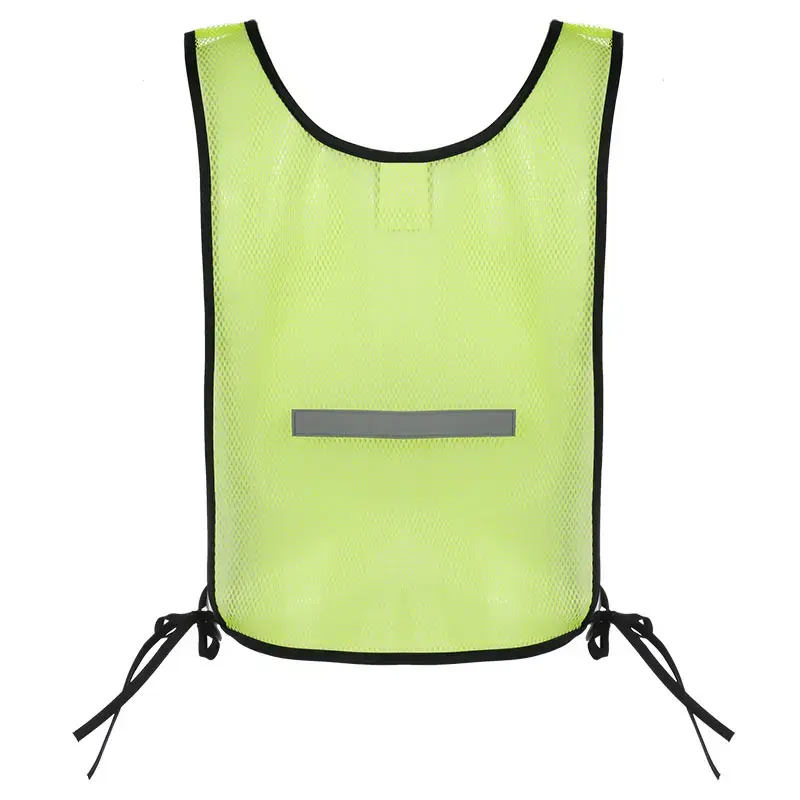Special design of construction reflective vests
Special design of Construction Reflective Vests: the perfect combination of safety and practicality
On construction sites, workers face a variety of risks. As an important personal protective equipment, reflective vests can significantly improve workers' visibility and reduce the probability of accidents. This article will explore the special design of construction reflective vests in depth to help international wholesale buyers better understand the characteristics and advantages of such products.
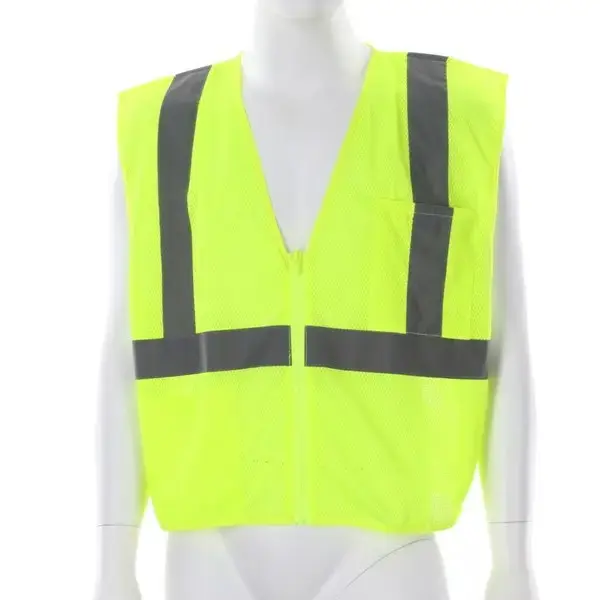
1. High visibility design
High reflective materials: Construction reflective vests are usually made of highly reflective materials, such as glass microbead reflective materials or prism reflective materials. These materials can reflect light back to the light source at night or in low light conditions, such as car headlights, so that the wearer's outline is clearly visible, greatly increasing the visible distance. Generally speaking, high-quality reflective vests can be visible up to hundreds of meters at night, providing workers with enough time to react and avoid danger.
Reflective stripe design: The shape, width, spacing and arrangement of reflective stripes are carefully designed. Common ones include horizontal stripes, vertical stripes, diagonal stripes and various geometric patterns. Horizontal stripes can enhance the visual effect of the width of the human body, vertical stripes can highlight the height of the human body, and diagonal stripes and geometric patterns are more recognizable. For example, some reflective vests use a "Y" or "X" shape of reflective stripes, which can not only better fit the curve of the human body, but also reflect light at different angles to ensure the visibility of workers in all directions.
2. Material and durability design
Wear-resistant fabrics: Due to the complex environment of the construction site, reflective vests often rub and contact with various objects, so they need to have good wear resistance. Common wear-resistant fabrics include Oxford cloth, polyester, etc. These fabrics are specially treated, and the surface is strong and durable, which can resist a certain degree of friction, scratches and wear, and extend the service life of the reflective vest.
Waterproof and breathable performance: In outdoor construction, workers may encounter various weather conditions, such as rainy days, humid environments, etc. Therefore, construction reflective vests usually have waterproof or splash-proof functions, and use special waterproof coatings or fabric processing technologies to prevent rainwater from penetrating and keep workers dry. At the same time, in order to ensure the comfort of workers when wearing, the fabric of the vest also has good breathability, which can allow air to circulate inside and outside the clothing, discharge heat and moisture from the body, and reduce the feeling of stuffiness.
3. Functional design
Multi-pocket design: Construction reflective vests are often equipped with multiple pockets of different sizes and functions, which are convenient for workers to carry various tools and items. For example, some vests have pockets on the front chest, back, shoulders and both sides. Workers can put small tools such as wrenches, screwdrivers, notepads, pens, etc. in the pockets for easy access at any time and improve work efficiency. Some pockets are also closed with zippers or Velcro to ensure the safe storage of items and prevent them from falling during work.
Adjustable design: In order to adapt to workers of different body shapes and work needs, reflective vests usually have an adjustable design. Common ones include adjustable shoulder straps, belts and cuffs. Workers can adjust the tightness of the vest according to their comfort and work scenes to ensure that it fits the body without affecting the flexibility of activities. For example, for jobs that require frequent bending and stretching, workers can adjust the waistband to make the vest fit more closely around the waist and reduce the sense of restraint.
4. Ergonomic design
Comfortable and fitting tailoring: Construction reflective vests are tailored based on ergonomic principles, taking into full account the shape and movement characteristics of the human body. The vest's pattern design can fit the body curve, which not only ensures the comfort of wearing, but also does not affect the work because it is too loose. For example, some vests adopt a slim or sports cut, and are reasonably designed in the shoulders, chest and waist, so that workers can stretch freely and unrestricted when performing various movements.
Design details to reduce fatigue: Workers are prone to fatigue after working on the construction site for a long time. Therefore, the design of reflective vests focuses on reducing workers' fatigue. For example, the back of the vest is designed with a breathable mesh fabric to increase air circulation and reduce the stuffiness of the back; soft elastic fabrics are used on the shoulders and neck to reduce friction and pressure on the skin and improve the comfort of wearing.
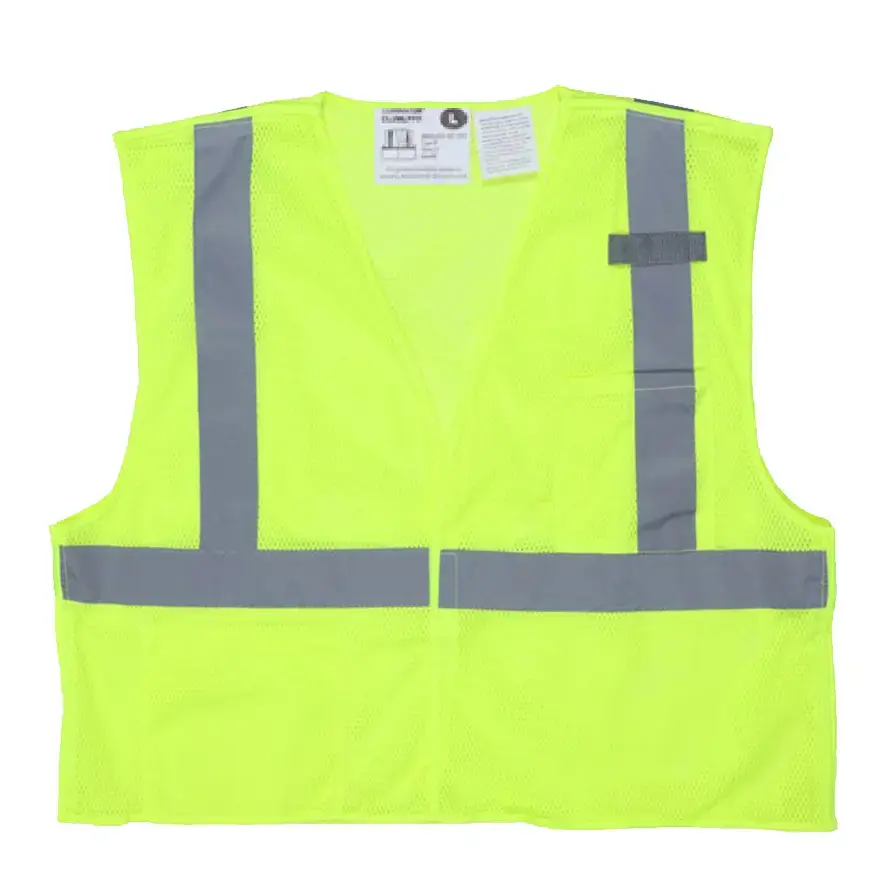
5. Design that meets safety standards
International safety standard certification: Construction reflective vests need to comply with various international safety standards, such as EN20471, ANSI/ISEA 107, etc. These standards have strict regulations on the reflective performance, color, size, material, etc. of reflective vests to ensure the safety and reliability of the products in actual use. When choosing reflective vests, buyers should pay attention to whether the products have passed the relevant safety standard certification to ensure that workers are provided with protective equipment that meets the requirements. For example, the EN20471 standard stipulates the minimum reflective area, reflective color, and width and spacing of reflective stripes of reflective vests under different visibility conditions. Only vests that meet these requirements can be legally sold and used in the European market.
Color selection: The color of the reflective vest is also carefully selected, usually using highly saturated fluorescent colors, such as fluorescent yellow, fluorescent orange, fluorescent green, etc. These colors can form a sharp contrast with the surrounding environment both during the day and at night, improving the visibility of workers. Reflective vests of different colors can also be selected according to different working environments and needs. For example, in road construction, fluorescent orange reflective vests are often used because they have a good contrast with other colors in the traffic environment and can attract the attention of drivers; while in places such as construction sites, fluorescent yellow reflective vests are more common because they have a high degree of recognition.
6. Special Function Design
Fireproof and Flame Retardant Design: In some special construction environments, such as petrochemicals, electricity and other places, there are fire hazards, so reflective vests are required to have fireproof and flame retardant properties. This type of reflective vest is made of special fireproof fabrics, which can automatically extinguish or slow down the burning speed when it comes into contact with flames, reduce the harm of flames to the human body, and provide additional safety protection for workers.
Anti-static Design: In some flammable and explosive places, static electricity may cause serious safety accidents. Anti-static reflective vests can effectively eliminate human static electricity and reduce the risks caused by static electricity accumulation by adding conductive fibers or antistatic agents to the fabric. This design is crucial for workers working in gas stations, chemical plants and other places, and can ensure the safety of the working environment.
7. Customized design
Printing and logo printing: In order to meet the brand image and management needs of different companies, construction reflective vests can be customized, including printing and logo printing. Companies can print the company's name, logo, slogan and other information on the vest to enhance the company's visibility and image. At the same time, printing and logo printing can also be used as an identity mark to facilitate the company's management of staff. For example, on a large construction site, workers from different subcontractors wear reflective vests printed with their respective company logos, which can quickly distinguish between different teams and facilitate on-site management and coordination.
Color and style customization: In addition to printing and logo printing, buyers can also customize the color and style of reflective vests according to their preferences and actual needs. For example, you can choose different reflective stripe colors, or modify the style of the vest, such as adding or reducing pockets, changing the cuff design, etc. Customized design can make reflective vests more in line with the specific requirements of the company and improve workers' satisfaction and acceptance.
8. Intelligent design
Intelligent sensing and positioning function: With the continuous development of science and technology, some new types of construction reflective vests have begun to incorporate intelligent elements. For example, some reflective vests are equipped with intelligent sensing devices, which can automatically adjust the reflective brightness according to the intensity of the surrounding light, improving visibility under different lighting conditions. Some reflective vests also integrate positioning systems, such as GPS positioning modules, which can track the location information of workers in real time. This is very useful for workers working in large construction sites or dangerous areas. Once an emergency occurs, managers can quickly determine the location of workers and rescue them.
Compatibility with wearable devices: In order to better meet the diverse needs of construction sites, some reflective vests are designed to be compatible with wearable devices. For example, interfaces or pockets can be reserved on the vest to facilitate workers to wear smart watches, walkie-talkies, earplugs and other devices. This design not only improves the work efficiency of workers, but also ensures that they maintain good communication and information transmission during work.
9. Sustainable design
Application of environmentally friendly materials: In today's society, environmental awareness is becoming more and more important, so construction reflective vests are also beginning to be produced with environmentally friendly materials. For example, recyclable polyester fiber, organic cotton and other materials are used to make vests to reduce environmental pollution. At the same time, energy conservation and emission reduction are emphasized in the production process, and environmentally friendly printing and dyeing processes and processing technologies are adopted to reduce energy consumption and waste emissions.

10. Market trends of construction reflective vests
Industry growth trend: With the development of the global economy and the continuous advancement of infrastructure construction, the demand for construction reflective vests is also increasing year by year. Especially in emerging market countries such as Asia, Africa and South America, the scale of infrastructure construction is huge, which provides a broad development space for the reflective vest market. At the same time, with the increasing attention paid to work safety and the increasingly stringent relevant laws and regulations, the market demand for construction reflective vests will be further released.
Technological innovation and product upgrade: In order to meet the changing needs of the market, the reflective vest industry will continue to innovate and upgrade products. On the one hand, higher-performance reflective materials and fabrics are developed to improve the reflective effect, durability and comfort of reflective vests. On the other hand, the research and development of intelligent design and functions will be strengthened, and more innovative products will be launched, such as smart sensing reflective vests and reflective vests with health monitoring functions. In addition, enterprises will also focus on the sustainable development of products and develop environmentally friendly reflective vests to adapt to the requirements of environmental protection policies and the green consumption trend of the market.
Conclusion
The special design of construction reflective vests plays an important role in ensuring the safety of workers, improving work efficiency and meeting the needs of enterprises. Through the careful design of high visibility design, durable material selection, practical functional configuration, ergonomic considerations, compliance with safety standards, special function expansion and customized services, reflective vests have become an indispensable personal protective equipment on the construction site. For international wholesale buyers, understanding these special design features will help choose the right products to provide reliable protection for workers on the construction site, while also meeting the personalized needs of different customers and occupying a dominant position in the fiercely competitive market....

